Red Hat ブログ
When deciding which open hybrid cloud platform to choose, organizations should ask five fundamental questions about the platform:
-
Will it help the organization compete more effectively against its existing competitors and market disruptors by allowing them to maximize budget allocation to transformation?
-
Will it align their people with skills that are durable in the ever-evolving technology landscape?
-
Will it allow them access to the largest pool of innovation and allow them to contribute to community-powered innovation while limiting maintenance costs?
-
Will it allow the organization to leverage the strengths of each public cloud provider?
-
Will it allow the organization to respond to big tech and cloud providers if they become new market entrants into the organization’s existing market?
Let’s examine each of these questions and the possible answers to them in more detail.
Competing more effectively against existing competitors and potential disruptors
The cost of maintaining existing IT means that organizations are often not able to dedicate as much money to innovation as they would like. Startups without this barrier are able to spend the majority of their budgets on innovation. Organizations looking to compete with startups and new market entrants need to shift the balance of their budgets to transformation. An open hybrid cloud platform needs to allow organizations to transfer more of their IT budgets to transformation.
This can be accomplished by embracing open source solutions. As Red Hat's recent State of Enterprise Open Source reported, respondents indicate that the two greatest benefits of enterprise open source are a higher quality of code and lower Total Cost of Ownership (TCO). This powerful combination allows organizations to drive down costs while at the same time implementing an innovation platform for the future.
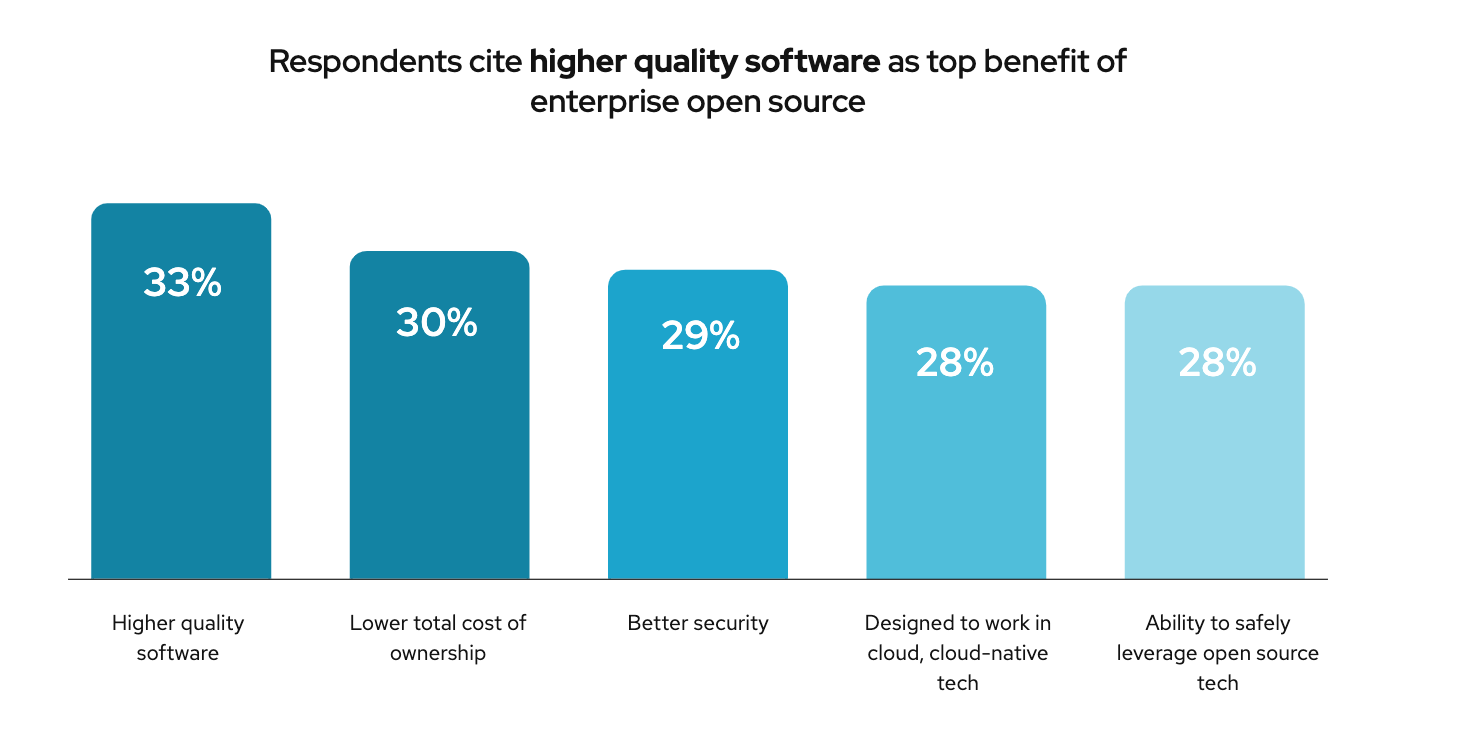
For example, KVM, the open source virtualization technology, is able to provide an alternative to expensive proprietary virtualization and at the same time forms the foundation for the next generation of virtualization technologies through Container Native Virtualization.
One technology is used to both reduce costs of existing IT and form the basis of the open hybrid cloud platform of the future. The same could be said for Linux in that it is less expensive than proprietary operating systems and also forms the foundation for the future of IT.
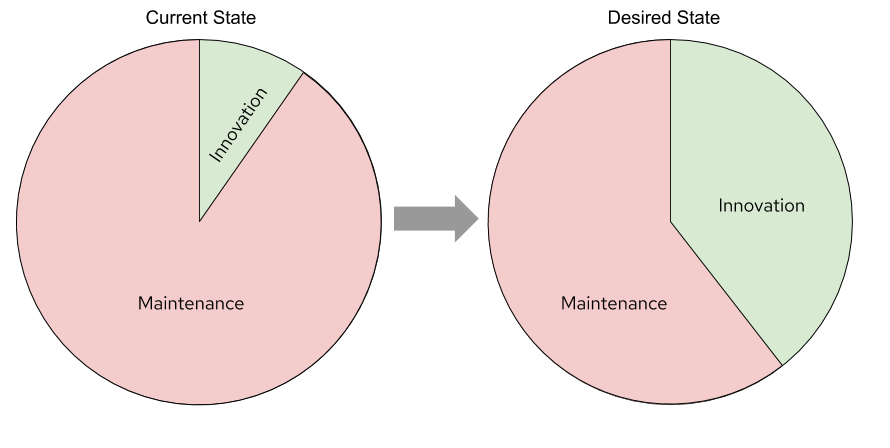
An alternative is continuing to pay an ever-increasing tax by adopting a proprietary hybrid cloud platform from a vendor that has a portfolio that is not entirely based on open source. That choice could limit the budget available for transformation, thus slowing transformation and putting organizations at risk of disruption.
Aligning people to durable technology skills
A challenge that organizations face is how to ensure their associates have the skills necessary to facilitate digital transformation. This is most critical in the information technology teams that are leading the transformation.
The Linux Foundation's 2018 Open Source Jobs Report found that the technologies that are required by all organizations striving for digital leadership are based on open source and rooted in Linux. Therefore, broadly acquiring these skills across IT employee bases are not just desirable, but may be vital for long term success.
If these skills are to become the foundation for the hybrid cloud platform then they must be represented both vertically throughout the stack and horizontally across the deployment footprints. It is critical that the open hybrid cloud platform is based on open source software along the axis of the stack and deployment mode in order to facilitate the longevity of the skills learned.

Therefore, as illustrated in the diagram above, it is necessary for foundational technologies throughout the stacks to share similarities based on open source. This will allow for both efficiency and longevity. Conversely, if proprietary software is the foundation then skills learned will not produce as much value, will be non-transferable between layers and deployments models, and require more frequent retraining.
Allowing community-driven innovation while reducing the long tail of maintenance
Another important aspect to consider when choosing an open hybrid cloud platform is whether or not the platform will allow access to community-driven innovation while at the same time, reducing the long tail of maintenance associated with using community open source. The diagrams below illustrate the choices organizations face.
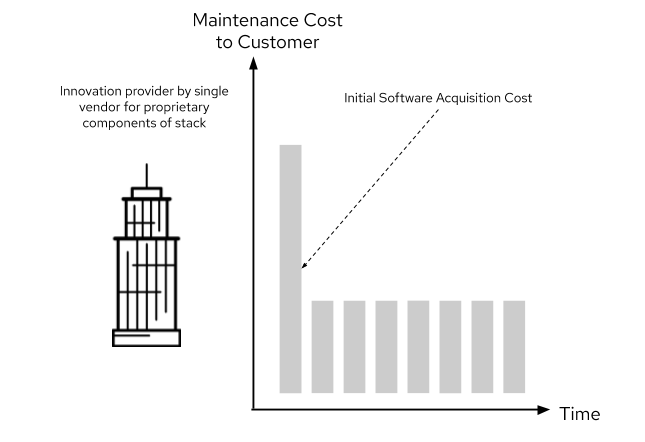
The first scenario as illustrated above is to purchase an open hybrid cloud platform from a vendor that derives its software primarily from a proprietary development model. While this scenario allows an organization to transfer the maintenance of the platform it inhibits the organization from having access to the largest pool of innovation since it provided solely through a single vendor’s proprietary research and development capabilities. In a world where the majority of innovation takes place outside of the four walls of any one software company, this is not a favorable choice.
The second scenario as illustrated below is to use open source community-developed software directly. While this approach provides access to community-powered innovation it also requires the organization to take on the maintenance of the software. This adds a significant amount of cost in an area that is not differentiating to the organization’s core business making it another unfavorable choice.
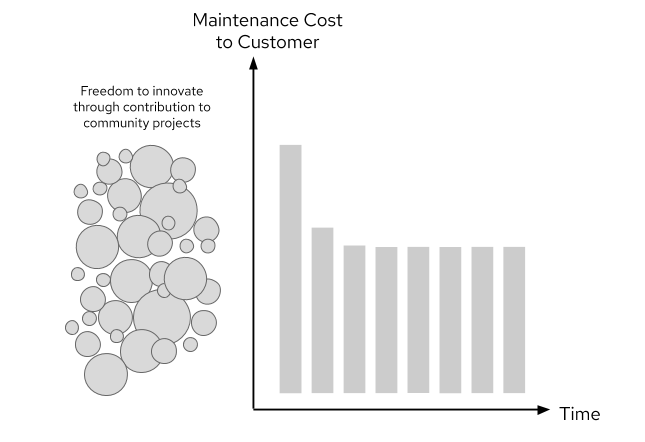
The final scenario is illustrated in the next diagram
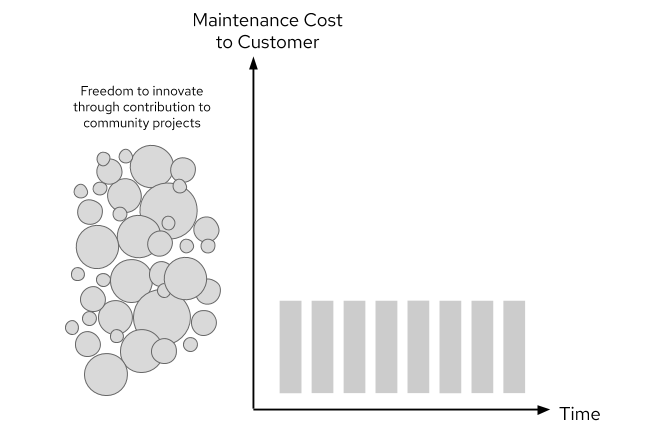
. In this model, organizations are able to contribute to open source communities to innovate. In addition they can work with the trusted vendor to develop capabilities in the community projects that are required should they not have the skills to do so. All the while they are able to obtain access to this innovation through a subscription to enterprise open source software.
The maintenance (bugfixes, security patching, backporting) is provided by a software vendor, which can dramatically reduce the cost of maintaining the software over time. This scenario provides the freedom to innovate, access to the innovation of the open-source community, and reduces the cost of maintenance over time.
Leveraging and Responding to Big Tech
Organizations need to consider two aspects strategically when considering the public cloud. First, they need to ensure they can take advantage of the unique capabilities each public cloud provider can individually provide. Second, organizations also need to ensure that they can move workloads between public cloud providers with as little friction and effort as possible, should the need arise.
The need to move between public cloud providers may come from any number of reasons. For example, a provider introducing unfavorable business terms (or another provider offering better ones), becoming a competitor with the organization’s broader offerings or interests, or emergency action following large outages or security concerns. Legislation requiring specific features or data location may also be a factor.
The illustration here demonstrates one scenario in which applications are built directly on a single public cloud using the provider’s services. In this scenario, applications are not easily transferable to other public clouds.
The example here illustrates that if an organization wanted to take advantage of specific capabilities that are strong in another cloud provider, such as AI/ML or lower-cost services, they would not be able to easily. In addition, if the public cloud provider decided to enter the market in which the organization competes (for example: retail, video streaming, transportation and logistics, financial services) then the organization would be tightly coupled to a new competitor.

In contrast, the illustration below illustrates an alternative scenario in which an organization leverages an open hybrid cloud platform to ensure applications can be run across multiple public clouds and on-premise with a similar operational model. This allows applications to take advantage of the strengths of particular cloud providers. It also provides them a method to move applications between clouds for competitive, business, or regulatory reasons.

Red Hat’s open hybrid cloud
Unlike traditional IT vendors, community software, or public cloud providers Red Hat’s open hybrid cloud answers the five fundamental questions about a hybrid cloud platform with a resounding yes. Red Hat’s open hybrid cloud platform is delivered via its portfolio of enterprise software, developed the open-source way, that provides application and infrastructure software across all footprints. The platform allows organizations to:
-
Allocate more of their IT budgets to transformation and less to maintenance.
-
Align employee skill sets to durable skills based on open source and Linux.
-
Gain access to one of the industry's pools of innovation and allow user-driven innovation while reducing the long tail of maintenance.
-
Develop, run, and manage their applications across private cloud, public cloud, and the edge.
To learn more about Red Hat’s open hybrid cloud and how you can begin your journey please contact Red Hat to talk to an expert.
